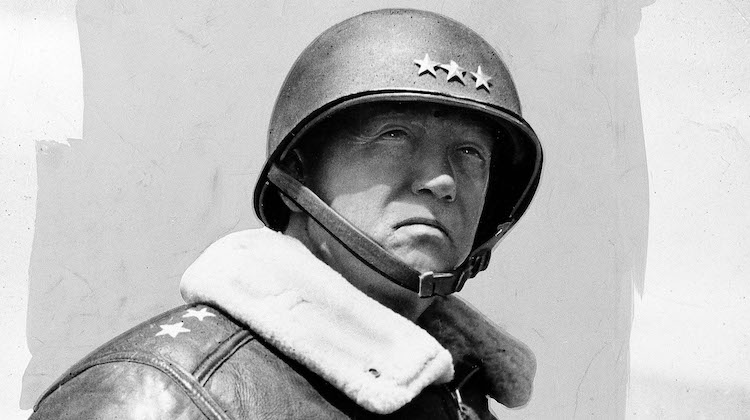O
f all the Broadway musicals written between the consolidation of the genre in the early ’20s and the start of its decline in the mid-’60s, only 20 or so are now revived regularly. Five of them—Oklahoma! (1943), Carousel (1945), South Pacific (1949), The King and I (1951), and The Sound of Music (1959)—feature lyrics by Oscar Hammerstein II and music by Richard Rodgers, while a sixth, Show Boat (1927), was written by Hammerstein and Jerome Kern. Hammerstein also wrote the books for five of these shows (the exception is The Sound of Music), and those librettos define to this day how a “normal” musical is constructed. He is thus by definition the most important and influential figure in the history of musical comedy.
No one questions Hammerstein’s historical significance, nor does the popularity of these six musicals show any sign of diminishing. But there is a gap between that popularity and the esteem in which he is held by many critics. Kenneth Tynan summed up the conventional wisdom about the alleged sentimentality and naiveté of Hammerstein’s work when he dismissed The Sound of Music as “a show for children of all ages, from six to about eleven and a half.” Stephen Sondheim, Hammerstein’s protégé, put it more forgivingly when he described him as “easy to make fun of because he is so earnest.”
Hammerstein affected to be unfazed by such criticisms. “In my book,” he told Mike Wallace in a 1958 TV interview, “there’s nothing wrong with sentiment because the things we’re sentimental about are the fundamental things in life, the birth of a child, the death of a child or of anybody, falling in love.” Yet they continue to be made, if less often today than in the past, and Todd S. Purdum engages directly with them in Something Wonderful: Rodgers and Hammerstein’s Broadway Revolution, an introduction to the lives and work of Rodgers and Hammerstein. Its first chapter is actually titled “The Sentimentalist.”* But Purdum is a political journalist, not a student of theater, and his book neither breaks new biographical ground nor offers fresh insights into the interior lives of its subjects. It is hard to see for whom Something Wonderful was written other than readers who know nothing whatsoever about either man, nor does it seem likely that its publication will have any discernible effect on their reputations, critical or otherwise.
About Rodgers’s reputation, of course, there is no doubt. Long before he ended his partnership with Lorenz Hart and started writing with Hammerstein, he was universally regarded as having (in the words of Leonard Bernstein) “established new levels of taste, distinction, simplicity in the best sense, and inventiveness” in popular song. But what about his second collaborator? Will Oscar Hammerstein be remembered merely as a shrewd craftsman who knew what the public wanted and gave it to them? Or will he be seen as a giant in his own right?
H
ammerstein called himself “a strange man,” and while that is an exaggeration, his personality was far from simple. Born in New York in 1895, he was the oldest son of a mixed marriage (his father was a fully assimilated second-generation German Jew, his mother a Presbyterian Scot) and carefully steered clear throughout his career of subject matter indicative in any way of his Jewish background, though he made no attempt to conceal it. He broke up his first marriage after falling in love at first sight with another man’s wife, leading to a union that was not merely successful but all-consumingly so: He reserved his emotions for Dorothy, his second wife, treating his children in a distant, often aggressively competitive manner and running his professional life in much the same way. Adored by his friends, he was seen by his colleagues as a canny and ruthless businessman who could be, as the director Joshua Logan put it, “tough as nails.”
It was Hammerstein’s own theatrical family—his father was a vaudeville producer, his paternal grandfather an opera impresario—that determined his destiny. He started writing for the stage in college, teaming up with the composers Rudolf Friml, Otto Harbach, and Sigmund Romberg to create European-style operettas. Even then, he sought to create shows whose songs were firmly rooted in their dramatic action, and he also longed to junk the fluffy plots that dominated the genre. But Hammerstein had no knack for coming up with original storylines, and it was not until he started adapting preexisting source material that he found himself as an artist.
Seven years after Hammerstein’s first Broadway show opened, he and Jerome Kern wrote Show Boat, a stage version of Edna Ferber’s bestselling 1926 novel and the first musical in which serious subjects (among them murder and miscegenation) were treated on stage. But the success of its original production, which ran for a year and a half, failed to persuade other producers that theatergoers were eager to embrace similar fare, and while several of the later songs that Hammerstein wrote with Kern, including “All the Things You Are” and “The Song Is You,” became standards, he wrote no hit shows between 1932 and 1943.
Hammerstein then teamed up with Rodgers, whose long-standing collaboration with Lorenz Hart had been derailed by Hart’s alcoholism. It had already run its course in any case, for Hart was incapable of writing the books for his own shows, and he and Rodgers, both of whom longed to do more challenging work on Broadway, found it impossible as a result to realize their shared ambitions. When Rodgers invited Hammerstein to work on a musical version of Green Grow the Lilacs, a 1930 play by Lynn Riggs about pioneer life in what would become the state of Oklahoma, Hammerstein accepted with alacrity.
By then he had long since perfected his lyric-writing style, turning out songs that were noteworthy for their seemingly effortless combination of frank emotionalism and directness of utterance (“Why was I born? / Why am I living?”). To this he now added an increased determination to do again what he and Kern had already done so well in Show Boat, writing an entire show in which the emotional stakes are involvingly high and every musical number is painstakingly integrated into the show’s dramatic arc, propelling it forward instead of standing apart from it.
To this end, Rodgers and Hammerstein broke with Broadway tradition by reversing the order in which they wrote their songs. Instead of setting his lyrics to Rodgers’s preexisting tunes, Hammerstein usually wrote them first, after which Rodgers set them to music. This made it easier for them to break free from the rigid formal strictures of repeating-chorus “golden age” popular song, and it also allowed Hammerstein to plunge further into his own deep well of feeling, thereby encouraging Rodgers to write music more expansive than the brilliant show tunes to which Hart had previously set his lyrics. In addition, Hammerstein shunned his predecessor’s elaborate wordplay, opting for straightforwardness (“I can see the stars gittin’ blurry / When we ride back home in the surrey”) over Hart’s self-conscious virtuosity (“I’m wild again! / Beguiled again! / A simpering, whimpering child again”).
Hammerstein looked to his source material not just for song cues but for actual inspiration as well. Consider Riggs’s opening stage direction of Green Grow the Lilacs:
It is a radiant summer morning several years ago, the kind of morning which, enveloping the shapes of earth—men, cattle in the meadow, blades of the young corn, streams—makes them seem to exist now for the first time, their images giving off a visible golden emanation.
In addition to yielding up the lyrics of “Oh, What a Beautiful Mornin’,” which describe “a bright, golden haze on the meadow” and corn that “looks like it’s climbin’ clear up to the sky,” this passage gave Hammerstein the idea to start Oklahoma! not with the customary rousing full-ensemble chorus but with the plainest of stage pictures, a lone woman churning butter while a cowboy is heard singing offstage. Here as elsewhere, he shook off the tired conventions of the musicals of the ’20s and ’30s, preferring emotional force to fizzy frivolity (Oklahoma! hinges on the sexual awakening of one character and the killing of another) and designing a tightly knit structural template in which each successive song pushes the show inexorably closer to its climax.
Aside from the shows themselves, it is this formal template that is Hammerstein’s chief contribution to the American musical. Virtually every Broadway musical to have held the stage since 1943 has been structured in a way similar to that of Oklahoma!* Shortly before Oklahoma! opened, Hammerstein told his son that it was “different [from] and higher in its intent” than other musicals. The same was true of Carousel, an Americanized version of Ferenc Molnár’s 1909 play Liliom that contains what Sondheim calls “the single most important moment in the revolution of contemporary musicals.” Sondheim is referring to the “bench scene,” a 12-minute-long near-operatic scena during which the show’s two principal characters discover and reveal their love for each other in an exquisitely sustained melding of speech and song: “If I loved you, / Words wouldn’t come in an easy way— / Round in circles I’d go!”**
Except for George Gershwin’s Porgy and Bess (1935), which was conceived as a full-scale grand opera, no previous Broadway show had contained so ambitious and completely realized a piece of music drama. It has to be said that the flawless first act of Carousel is followed by a finale in which Hammerstein comes perilously close to letting genuine sentiment spill over into sticky sentimentality, above all in “You’ll Never Walk Alone,” which is invariably cited by those who dislike his work (“At the end of the storm is a golden sky, / And the sweet silver song of a lark”). Even so, it still brings Carousel to a dramatically convincing close when sung and staged with disciplined understatement.
The hallmark of Carousel and Oklahoma! is their untragic idealism, which is central to their mass appeal. They embody a quintessentially American vision of life, one in which the inescapable pain and suffering of human existence—not excluding violent death—can be ameliorated by the power of love. Nor was this vision insincere, at least in Hammerstein’s case (Rodgers’s personality was more opaque). He described himself as “one-third realist and two-thirds mystic,” and every word he wrote came straight from the heart. When he urged Sondheim not to imitate him, he said, “Don’t write what I feel. I really believe all this stuff. You don’t.” Had he not believed it, he could never have written “If I Loved You,” which Rodgers set to a melody (it is no mere tune) of Tschaikovskian amplitude that is worthy of his partner’s wholly felt words.
Having charted the future course of the American musical, Hammerstein longed to try something new. But his desire to keep on innovating exceeded his ability to do so, as he and Rodgers proved with Allegro (1947), in which they threw out their rulebook and wrote an experimental musical that uses a quasi-Greek chorus to tell the story of an Everyman-like small-town doctor. Hammerstein’s book, ingenious though it is, borders on the faux-naïf (“Gosh! Is everybody in this town going to have their babies today?”), while Rodgers’s music is pleasant but largely unmemorable.
The two men then returned to form with South Pacific and The King and I, whose scores are resplendently beautiful, though both shows, South Pacific in particular, are marred by Hammerstein’s obtrusive liberal didacticism: “You’ve got to be taught before it’s too late / Before you are six or seven or eight / To hate all the people your relatives hate.” (Rodgers himself admitted in 1968 that Hammerstein’s “one fault” was that he was “too preachy.”) Nevertheless, they continue to be revived, not merely because of the quality of their songs but also because of the sureness of Hammerstein’s dramatic carpentry.
The duo’s first four hits seem to have exhausted their powers of creative renewal, for they were followed by two forgotten flops, Me and Juliet (1953) and Pipe Dream (1955), and the commercially successful but now irretrievably dated Flower Drum Song (1958). By then, their energies were being diverted into the production of overblown widescreen film versions of their stage shows.
While they scored two more successes with The Sound of Music and a TV version of Cinderella (1957), neither is comparable in artistic quality to its predecessors, in part because Hammerstein, who was already suffering from the stomach cancer that killed him in 1960, turned over the task of writing the book of the former show to Howard Lindsay and Russel Crouse. These old pros yielded to the temptation to indulge in the florid sentimentality of which Hammerstein had mostly steered clear and to which he now succumbed in some of his own lyrics, the last he ever wrote. The colossal success of The Sound of Music (and its 1965 film version) cemented his posthumous reputation as a merchant of kitsch, and it was taken for granted decades after his death that all his musicals had become period pieces.
Yet Hammerstein’s songs and shows continued to be sung and staged, and a dark-hued 1992 Royal National Theatre revival of Carousel brought about a critical reevaluation of his work whose effects have proved to be lasting. Today he is generally acknowledged as a major figure, and only blinkered snobs now feel the need to apologize for appreciating his best work with both Rodgers and Kern, much less for admiring the dramaturgical innovations that, in Stephen Sondheim’s words, “changed the texture of the American musical theater forever.” He is, in fact, one of America’s greatest and most characteristic artists, a genius whose open-eyed optimism is a reflection of our national character as it once was and may yet be.




